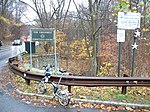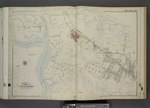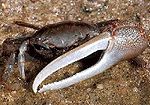Fresh Kills Landfill

The Fresh Kills Landfill was a landfill covering 2,200 acres (890 ha) in the New York City borough of Staten Island in the United States. The name comes from the landfill's location along the banks of the Fresh Kills estuary in western Staten Island.The landfill opened in 1948 as a temporary landfill, but by 1955 it had become the largest landfill in the world, and it remained so until its closure in 2001. At the peak of its operation, in 1986, Fresh Kills received 29,000 short tons (26,000 t) of residential waste per day, playing a key part in the New York City waste management system. From 1991 until its closing it was the only landfill to accept New York City's residential waste. It consists of four mounds which range in height from 90 to about 225 feet (30 to about 70 m) and hold about 150 million short tons (140×10^6 t) of solid waste. The archaeologist Martin Jones characterizes it as "among the largest man-made structures in the history of the world."In October 2008, reclamation of the site began for a multi-phase, 30-year site redevelopment. The landfill has been developed into Freshkills Park.
Excerpt from the Wikipedia article Fresh Kills Landfill (License: CC BY-SA 3.0, Authors, Images).Fresh Kills Landfill
West Shore Expressway, New York Staten Island
Geographical coordinates (GPS) Address Nearby Places Show on map
Geographical coordinates (GPS)
| Latitude | Longitude |
|---|---|
| N 40.57667 ° | E -74.18733 ° |
Address
West Shore Expressway
10312 New York, Staten Island
New York, United States
Open on Google Maps








